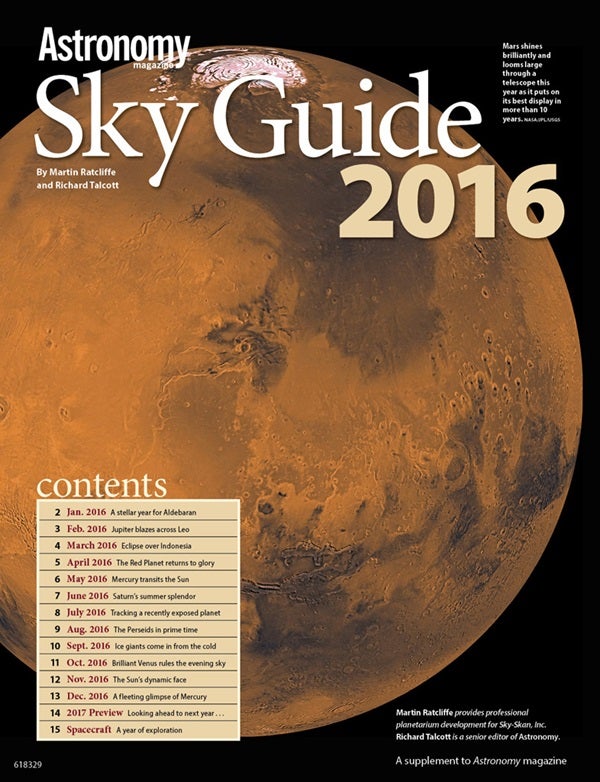If you’re seeking a land-based adventure, the center line passes through Sumatra, Borneo, and Sulawesi. Many visitors will opt for experiencing the event from a cruise ship, however, because they can remain mobile to find a clear spot. Totality lasts from about one minute at the western end of the islands to more than three minutes at the east end. Maximum eclipse occurs much farther east in the Pacific and brings 4 minutes and 9 seconds of darkness.
The Moon isn’t the only object to pass in front of the Sun in 2016. On May 9, Mercury transits the Sun’s face for the first time in 10 years. Observers will see the planet’s black disk chart a leisurely course across the Sun’s southern half. The entire transit lasts more than seven hours and will be visible from eastern North and South America and Western Europe. But broad regions surrounding this area will see at least part of the event.
Mercury isn’t the only planet that puts on a show this year. Although Venus won’t stray as far from the Sun in 2016 as it did in 2015, its brilliance will adorn the predawn sky early in the year and the evening sky by late summer. Jupiter and Saturn remain glorious sights for most of 2016. Giant Jupiter reaches opposition in early March, while ringed Saturn follows some three months later.
But perhaps the most pleasing development on the planetary front is Mars’ return to prominence. The Red Planet shines brightest at opposition in late May, when it glows at magnitude –2.1 — the brightest it has been since 2005. It also looms large at opposition, spanning 19″ when viewed through a telescope and showing plenty of surface detail.
Following a superb year for meteor viewing in 2015, observers will face tougher conditions in the coming year. The only major shower that completely avoids moonlight is May’s Eta Aquariids. And although Perseid observers will have a few Moon-free viewing hours before dawn in August, Geminid watchers in December will battle a Full Moon.










